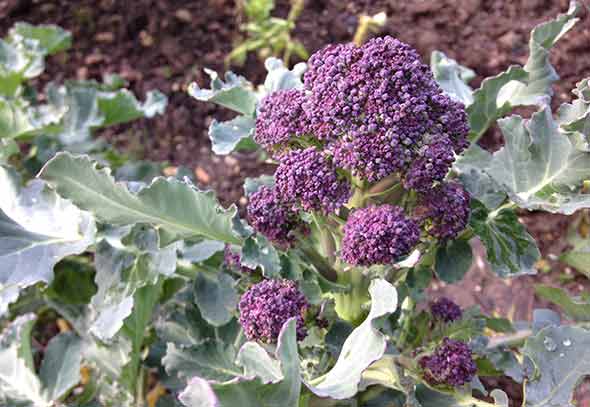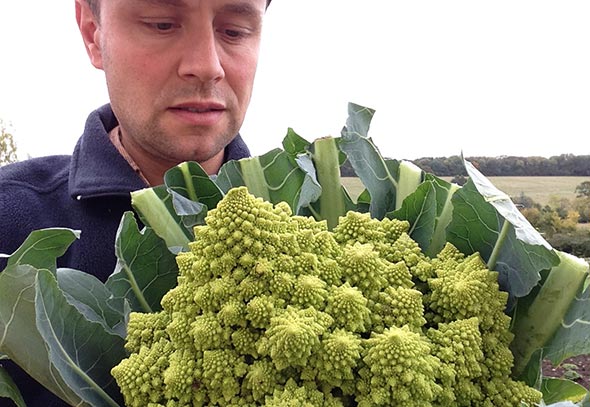Broccoli is one of my favourite vegetables to grow and easier to grow than cauliflower or Brussels sprouts. Many gardeners don’t bother with it because it occupies a large space and takes so long to grow, but once you know how to grow broccoli, it really isn’t a difficult crop. This ‘long term investment’ of space in the garden is so worthwhile though as freshly picked it is packed full of goodness and has a wonderful taste that you simply can’t get from shop-bought broccoli.
The crop will be ready to harvest during the leaner spring months of the following year when other winter vegetables have come to an end and anything that can be provided fresh during this time of the year has to be investigated since our frozen foods can only entertain me for so long!
My grandfather taught me how to grow broccoli, before this, I kept trying to grow too many plants and losing them all to caterpillars. I now grow about 6 plants of Purple Sprouting Broccoli which keeps our family of 4 going with as many florets as we can eat but they occupy a smaller area, making it easier for me to net them from Cabbage White butterflies. As you pick the florets, more growth is stimulated so the plants keep producing for a good few weeks.
Sow: April to May
Harvest: Spring the following year but this depends on the variety. Some varieties do not need to be chilled over winter to produce spears and can harvest in late summer or autumn if planted early.
Useful to Know: Reasonably hardy but I find dies below -10°C. Manure will cause more leaf than floret so plant them on ground that hasn’t been manured recently.
Potential Problems: Cabbage White butterflies will lay eggs and their caterpillars destroy your plants unless they are protected. Clubroot may attack the roots. Crop rotation and adding lime to the ground to maintain a higher PH will help if this is a problem.
Rotation Class: Brassica – follow on from legumes that will have left Nitrogen fixed in the soil. Do not add manure.
There are several varieties of broccoli seed available so it is worth making sure you are buying the right sort and checking the seed packet for the sowing / harvesting times. Traditional varieties that I have grown must be chilled over winter to produce spears so you cannot plant and harvest them at other times. There are summer and autumn varieties available that don’t need over-wintering. Here’s how to grow broccoli:
- Broccoli seed can be grown in a seed bed, or in plugs in the greenhouse before hardening off and transplanting to the final position.
- Transplant the young / healthy plants to their final planting position spacing them about 60cm / 2ft apart in June / early July.
- Net the crop so that cabbage white butterflies cannot land on the leaves, or be prepared to pick off the caterpillars daily.
- Do not add manure to the ground as this will cause excess green leaf and less florets.
Here are some varieties of broccoli that I have grown and you might like to try:
- Large-headed – probably need no introduction as they are commonly found in supermarkets. One large spear is produced and other smaller spears will grow after this is harvested.
- Sprouting broccoli – produces many small spears numerous small heads that should be picked regularly to encourage further production of more heads.

- Romanesco – eye-catching swirled heads and pointed spirals, is remarkably fractal in nature and resembles a cauliflower although its flavour is more delicate, slightly nutty with a crunchy texture. They can grow to a fair size as you can see below.

Broccoli should ideally be eaten freshly picked. It will keep in the fridge for 2-3 days but requires air circulation so keep it in an open or perforated plastic bag. Once cooked, it will again last 2-3 days refrigerated.
To store broccoli for longer (up to a year), it can be frozen. Cut into small florets / pieces and wash in cold water. Blanch in boiling water for 4-5 minutes before cooling rapidly (plunge into iced water or at least refrigerated water) to stop cooking.
Place into sealed bags or storage containers and freeze immediately.
